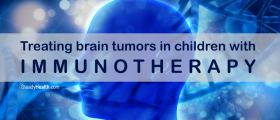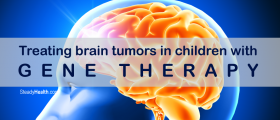
Radiation therapy is a common treatment for cancer used to shrink a tumor and destroy cancerous cells. Radiation therapy is included in the treatment of about half of all patients with cancer. In this article we will briefly explain radiation therapy.
Radiation Therapy Introduction
Radiation therapy involves use of high-energy x-rays, gamma rays or charged particles to treat different types of cancer. Radiation beams can be distributed outside the body or externally (external-beam radiation therapy) using a linear accelerator machine. Internal radiotherapy or brachytherapy is a type of radiation therapy in which a radiation source is placed in the body near the affected area. The third type is systemic radiation therapy that uses radioactive substances like radioactive iodine delivered though infusion to treat the targeted tissue.
How Does Radiation Therapy Work?
Radiation therapy works by destroying DNA of cancerous cells. Irreversibly damaged DNA causes the cells to stop multiplying and growing uncontrollably. The body then breaks down and eliminates these cells.
DNA can be damaged either directly or indirectly by using charged particles to form free radicals within cancerous cells to damage the DNA.
However, radiation therapy can also damage healthy cells causing different side effects. These side effects are usually predicted and expected.
Oncologists consider potential damage to healthy cells and amount of radiation targeted tissue can safely receive when planning a course of radiation therapy.
How is Radiation Therapy Used?
Radiation therapy can be used as curative treatment meaning there is a possibility to cure a cancer with the therapy by either destroying a tumor, preventing recurrence of a cancer or both. When radiation therapy is given with curative intent, it can be used alone or in combination with surgery, chemotherapy or both.
Radiation therapy can be also used as palliative treatment. Palliative radiation therapy is used only to relieve the symptoms when it is impossible to cure a cancer. Palliative radiation therapy can be used for treatment of brain metastases, to relieve the pain caused by a tumor that is pressing on the spine or growing within a bone or to restore a patient’s ability to eat and drink by destroying a tumor near the esophagus.
Side Effects of Radiation Therapy
Although it is painless, radiation therapy can cause different side effects during and after the treatment. Side effects of radiation therapy are determined by the type and dosage of radiation.
Common side effects of radiation therapy are hair loss, fatigue, skin damage, nausea, vomiting, loss of appetite and hearing problems.
- medlineplus.gov/ency/article/001918.htm
- www.nhs.uk/conditions/radiotherapy/
- Photo courtesy of Dina-Roberts Wakulczyk by Flickr: www.flickr.com/photos/68982768@N00/492937184/

















Your thoughts on this
Loading...